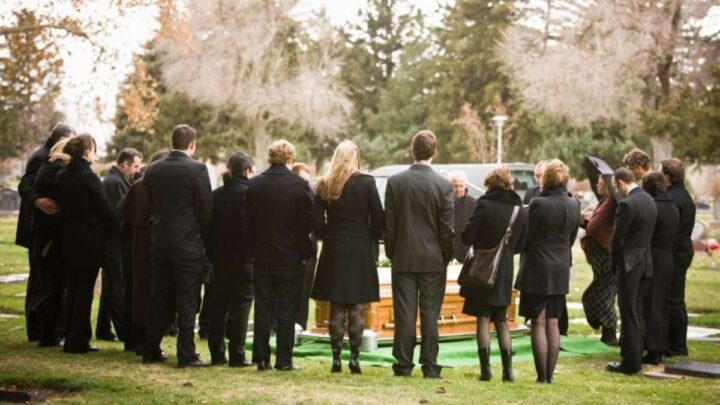Celebration of Life vs Funeral
Funeral traditions have existed for an astounding 50,000 years, dating back to the first burial rituals performed by Neanderthals. However, the modern discussion of Celebration of Life vs Funeral represents a significant shift in how people commemorate their loved ones.

In fact, 80% of Canadians now choose to include receptions in their funeral arrangements, highlighting a growing preference for more communal gatherings. While traditional funerals typically follow a structured format with visitation, service, and committal, celebrations of life offer a more informal approach. These celebrations can take place days or weeks after burial or cremation, allowing families to create personalized tributes in meaningful locations such as parks, homes, or restaurants rather than conventional funeral homes.
Choosing Celebration of Life vs Funeral Basics
The choice between a celebration of life vs funeral represents a fundamental shift in how families honor their loved ones. Accordingly, understanding the core differences helps families make informed decisions that align with their values and preferences.
Traditional funerals follow a structured format with three primary components. The first element involves a visitation or viewing, where guests pay respects to the deceased and spend time with the grieving family. Furthermore, the main funeral service typically occurs at a funeral home or church, incorporating religious passages, hymns, and eulogies. The final component includes a committal service at the cemetery, followed by a reception for sharing memories and support.
Specifically, a celebration of life takes a distinctly different approach. These ceremonies typically take place after the family has cared for the physical remains through burial or cremation. The focus shifts from mourning to celebrating the person’s life, accomplishments, and impact on others. Notably, celebrations of life can be planned weeks, months, or even years after someone has passed.

Key Differences in Atmosphere and Setting
One of the most significant aspects of a celebration of life vs funeral lies in their contrasting atmospheres. Traditional funerals maintain a more somber and structured environment. Essentially, celebrations of life encourage a more relaxed atmosphere where both tears and laughter are equally welcome.
The location flexibility presents another crucial distinction between these ceremonies. Traditional funerals usually take place in funeral homes or religious institutions. In contrast, celebrations of life can occur anywhere meaningful to the deceased. These venues might include:
- Favorite restaurants or bars
- Community centers or parks
- Museums or sporting venues
- Family homes or private properties
The level of participation also varies significantly between these two approaches. Traditional funeral services typically follow a predictable order with limited opportunities for audience interaction. In contrast, celebrations of life encourage active participation, often incorporating open mic sessions for sharing stories and memories.
Personalization and Changing Trends
The timing flexibility of celebrations of life offers families additional advantages. Unlike traditional funerals, which occur shortly after death, celebrations of life are scheduled when family members have had time to process their grief. This extended planning period allows for more thoughtful preparation and enables distant relatives to arrange travel.
The personalization aspect particularly distinguishes a celebration of life vs funeral approach. Traditional funerals often incorporate standard religious or cultural elements. Conversely, celebrations of life can be customized to reflect the deceased’s unique personality, incorporating their favorite music, activities, or themes.
Recent trends indicate a growing preference for celebrations of life, particularly following the pandemic period. This shift reflects changing social values and a desire for more personalized, uplifting ceremonies. These focus on the joy and fulfillment the person experienced in life.

Key Differences in Ceremony Structure
The decision between a funeral vs celebration of life often depends on various factors, including religious beliefs, family traditions, and personal preferences. Some families choose to combine elements of both approaches, creating hybrid ceremonies that maintain certain traditional aspects while incorporating more celebratory elements.
Attire and Religious Elements
The attire expectations also differ significantly between these two types of ceremonies. Traditional funerals typically call for formal, conservative dress. Meanwhile, celebration of life attire often reflects the more casual, personalized nature of the event, with some families even encouraging guests to wear bright colors to contribute to an upbeat atmosphere.
The role of religious elements presents another notable distinction. Traditional funerals often center around specific religious rituals and prayers. Celebrations of life, alternatively, can be religious or non-religious, offering flexibility to honor the deceased’s spiritual preferences or secular worldview.
Emotional Focus and Purpose
The emotional focus varies considerably between these two approaches. While traditional funerals acknowledge the finality of death and provide structured space for grieving, celebrations of life primarily emphasize cherishing memories and acknowledging the positive impact of the person’s life. This shift in emotional emphasis helps explain why 50% of all UK funerals in 2023 were described as celebrations of life.
Both celebrations of life and traditional funerals serve essential purposes in the grieving process. They help bereaved families publicly acknowledge their loss, receive community support, and honor their loved one’s memory. The key lies in choosing the approach that best reflects the deceased’s personality and provides the most meaningful way for family and friends to say goodbye.
Celebration of Life vs Funeral Frequently Asked Questions
What is a celebration of life vs funeral?
A celebration of life vs funeral represents two distinct approaches to honoring a loved one after their passing. A funeral is typically a more structured, traditional ceremony that follows specific religious or cultural customs, often taking place shortly after death. In contrast, a celebration of life is a more personalized and uplifting event that focuses on remembering the positive impact and unique qualities of the deceased rather than emphasizing mourning. Many families choose a celebration of life to create a meaningful experience that reflects their loved one’s personality, interests, and legacy.
Can a celebration of life be religious?
Yes, a celebration of life can be religious or non-religious. It offers flexibility to honor the deceased’s spiritual preferences or secular worldview, unlike traditional funerals which often center around specific religious rituals and prayers.
How should I dress for a celebration of life?
Attire for a celebration of life is often more casual than a traditional funeral. While it’s still important to dress respectfully, you may see guests wearing brighter colors or clothing that reflects the personalized nature of the event. Always consider any specific requests from the family.
When is a celebration of life typically held?
Unlike traditional funerals that occur shortly after death, a celebration of life can be held days, weeks, or even months after someone has passed. This flexibility allows for more thoughtful preparation and enables distant relatives to arrange travel.
Where can a celebration of life take place?
A celebration of life can be held in various locations meaningful to the deceased or their family. This might include favorite restaurants, community centers, parks, museums, sporting venues, or family homes. The choice of venue often reflects the person’s interests or personality.


